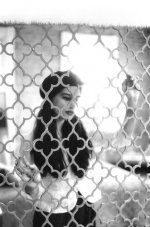bluesun267
Well-known
5222 from 2021 produces identical curves to samples from 1959 if developed to the same CI (I have test samples from numerous batches). The coating line has probably been changed a few times.
That films are changing to make them ‘lower silver’ is a myth and demonstrates a lack of understanding about film research and development.
Marty
Ignoring the marginally rude tone of your response, I would ask: What are your qualifications?
I will give mine: 40 years as a filmmaker and 25 in motion picture archiving and preservation.
Thinking that Kodak doesn't continually try to reduce manufacturing cost (of which silver is a big one) displays a rather naive view of basic business acumen in a capitalist system.
But, Kodak can be commended for achieving effectively equal results (from a measurement perspective) while the manufacturing process has changed many times over the last 60 years. But graphs and curves don't tell the full story of how a film will behave when employed toward aesthetic means. Otherwise there would never be the question: "How can I make a picture look like it was taken X number of years ago?"
If you had personally handled as much motion picture film as I have, you would be at a loss to explain the profound differences that are clearly visible between 1959 and today given your beliefs.
Shooting Double XX today is not some sort of magical trip back to 1959 simply because the brand name hasn't changed.







